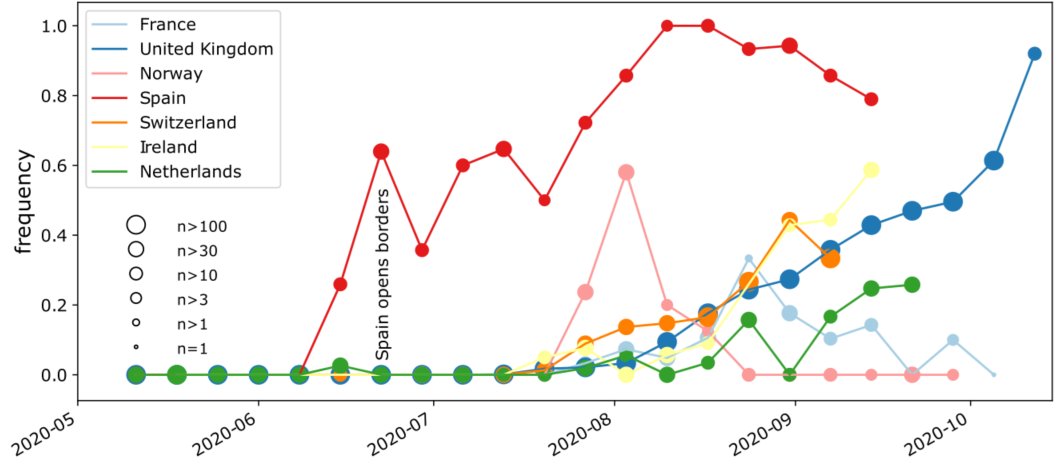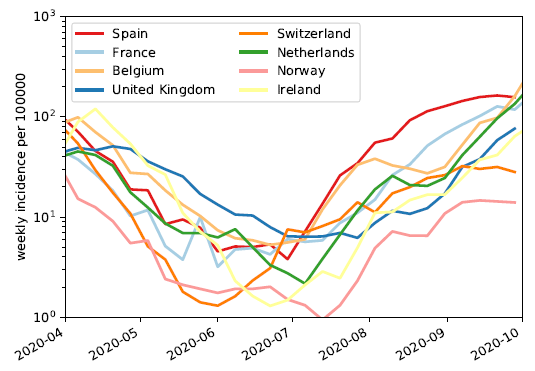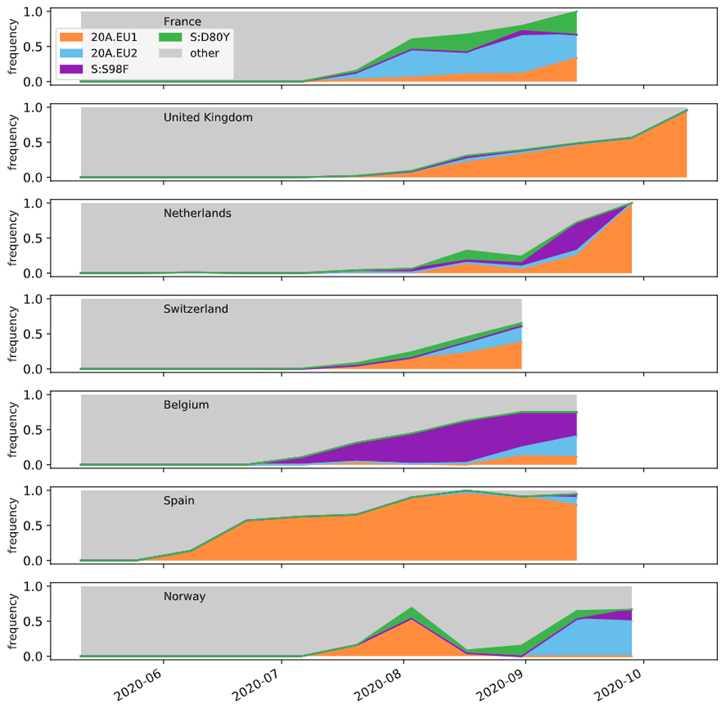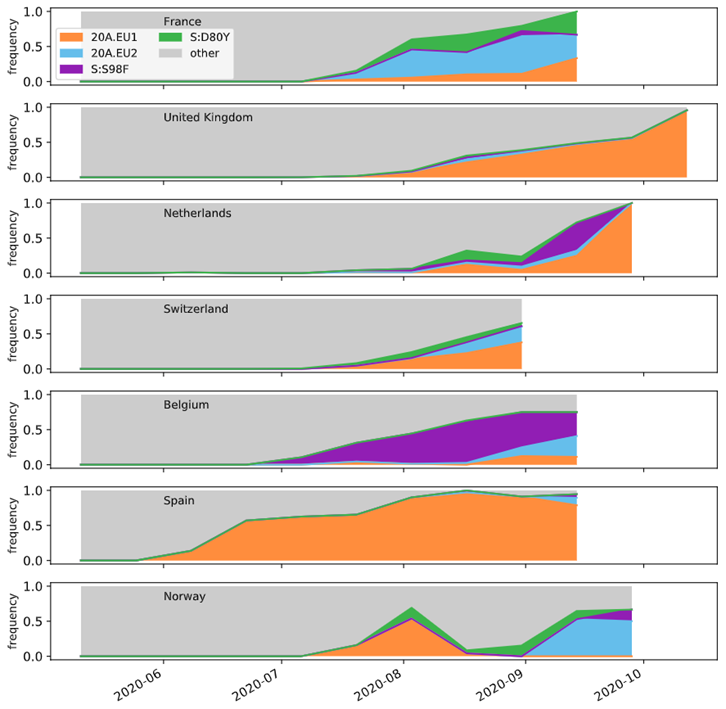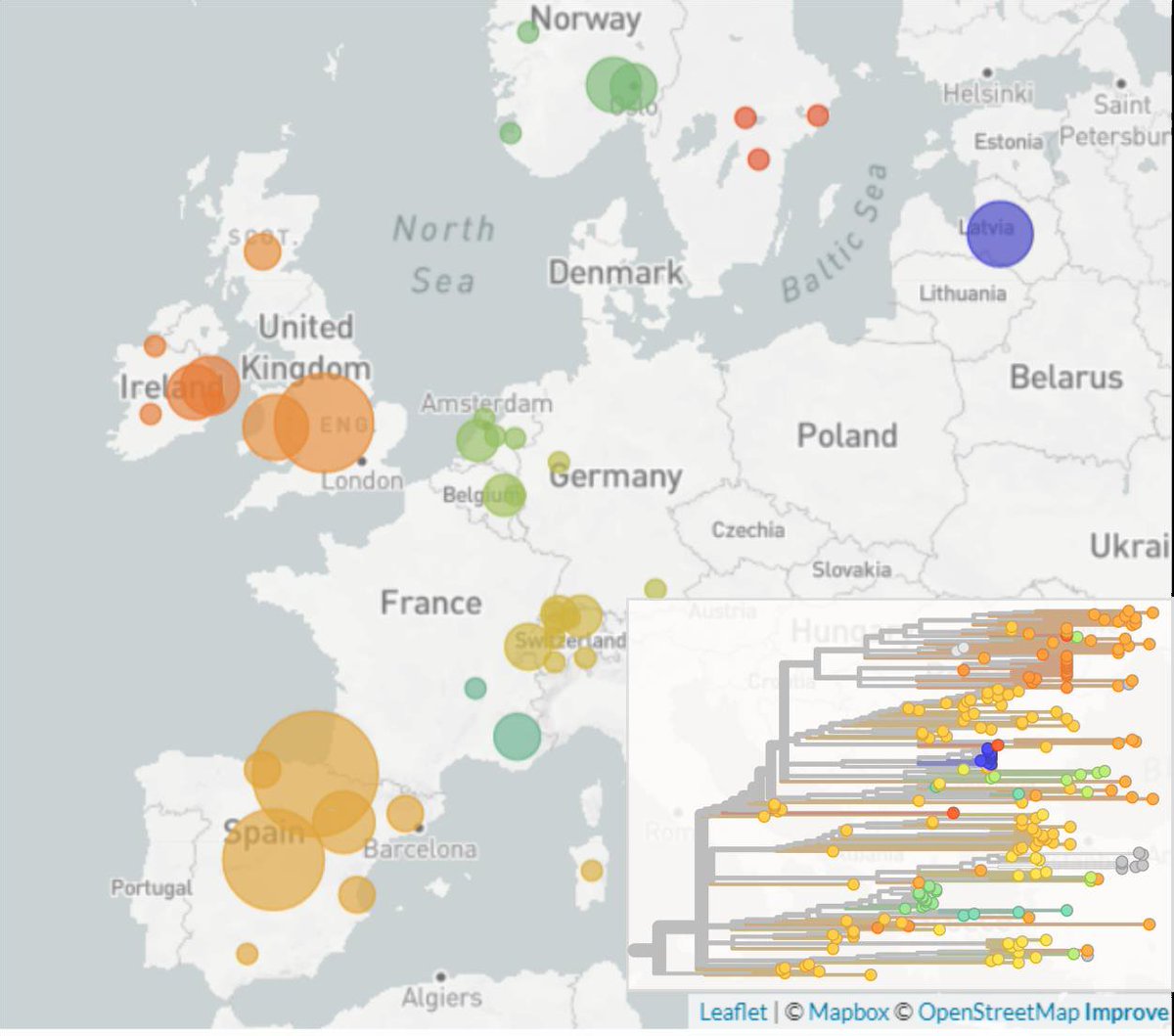Why is #COVID19 sequencing important? For one thing, it is the only way we can detect & track new variants.
In our latest preprint, we describe a novel #SARSCoV2 variant that has spread across Europe this summer & what it can tell us.
Read it here: https://www.medrxiv.org/content/10.1101/2020.10.25.20219063v1
1/16">https://www.medrxiv.org/content/1...
In our latest preprint, we describe a novel #SARSCoV2 variant that has spread across Europe this summer & what it can tell us.
Read it here: https://www.medrxiv.org/content/10.1101/2020.10.25.20219063v1
1/16">https://www.medrxiv.org/content/1...
This work was a fantastic joint effort with @MoiraZuber @SarahNadeau19 @TanjaStadler_CH & @richardneher in Switzerland & brilliant collaboration with @icoes & @fgonzalezf from SeqCOVID-Spain consortium.
Huge effort in getting this out quickly!
2/16
Huge effort in getting this out quickly!
2/16
The 20A.EU1 variant is characterised by spike mutation A222V & accounts for >20% sequences circulating in Europe currently. Another variant, 20.EU2 has the mutation S477N and is about 15% of sequences.
We focus on 20A.EU1 - you can see both here:
https://nextstrain.org/groups/neherlab/ncov/europe
3/16">https://nextstrain.org/groups/ne...
We focus on 20A.EU1 - you can see both here:
https://nextstrain.org/groups/neherlab/ncov/europe
3/16">https://nextstrain.org/groups/ne...
20A.EU1 originated in Spain in mid-summer - early sequences are linked to super-spreading events among agricultural workers that moved into the local population & from there were able to spread across the country. By end of July, ~50% of sequences in Spain were from EU1
4/16
4/16
We can plot proportion of total sequences that fall into 20A.EU1 by week, over time (countries with >20 seqs). 20A.EU1 has moved into multiple countries, & in many, it spread well after introduction. 20A.EU1 is >80% of seqs in UK & Spain and >30% in Ireland & Switzerland
5/16
5/16
In total 12 EU countries have sequences from 20A.EU1. Additionally, it& #39;s been exported to New Zealand (multiple times) & Hong Kong (once) from Europe. While the variant initially spread from Spain, it seems to have also transmitted from secondary countries.
6/16
6/16
Is the A222V mutation in spike responsible for this spread? Not necessarily! Epidemiological factors could explain this.
Incidence in Spain (red) rose early in summer. Combined with holiday travel, this was likely an opportunity for multiple introductions.
7/16
Incidence in Spain (red) rose early in summer. Combined with holiday travel, this was likely an opportunity for multiple introductions.
7/16
Combined with getting into a population cohort where spread was easier- perhaps those who were infected abroad were in more risky settings, which they also visited when home - this could have given 20A.EU1 a transmission advantage.
7/16
7/16
It& #39;s also important to note that while 20A.EU1 is prevalent in some countries that have had recent spikes in cases, it& #39;s not the major variant in *all* countries with recent rises: other variants are more common in France (20A.EU2) & Belgium (S: S98F).
8/16
8/16
So while 20A.EU1 is interesting & needs more investigation & monitoring, it is likely not the primary cause of the recent increases in #SARSCoV2 cases we see in Europe.
This image also highlights the importance of monitoring other variants that are common in Europe.
9/16
This image also highlights the importance of monitoring other variants that are common in Europe.
9/16
It is ONLY through sequencing that we can identify & track variants.
The last time points in the previous graph show the variation in the most recent available sequences. That limits how & #39;real time& #39; we can be. We also can& #39;t look at countries where we don& #39;t have sequences!
10/16
The last time points in the previous graph show the variation in the most recent available sequences. That limits how & #39;real time& #39; we can be. We also can& #39;t look at countries where we don& #39;t have sequences!
10/16
A coordinated approach to sequencing would be a game-changer in monitoring how variants spread & what role they might be playing in countries& #39; epidemics.
Additionally, travel may have ground to a halt again now, but Europe will & #39;open up& #39; again.
11/16
Additionally, travel may have ground to a halt again now, but Europe will & #39;open up& #39; again.
11/16
The spread of 20A.EU1 shows how a series of failures in #SARSCoV2 measures likely led to its dominance: high prevalence in Spain, ineffective travel screening/quarantine, & insufficient control of transmission of variants brought back to & #39;home& #39; countries.
12/16
12/16
When countries have worked hard to get #SARSCoV2 #COVID19 cases down to low numbers, identifying better ways to ‘open up’ without risking a rise in cases is critical. A better understanding of what role travel plays will make a difference in devising effective measures.
13/16
13/16
We will continue monitoring #SARSCoV2 #COVID19 variants 20A.EU1, 20A.EU2, & three others circulating in Europe (plus any more that seem important). This will be more effective if we can make sequencing more common & coordinated!
14/16
14/16
Though it& #39;s very important to restate that we have no evidence that the S:A222V mutation has had any impact on 20A.EU1& #39;s spread, we are working with labs to investigate this further.
Mutations are normal in viruses, & most do not affect function, so we should be cautious!
15/16
Mutations are normal in viruses, & most do not affect function, so we should be cautious!
15/16
And just to be very clear, as this question has popped up already: No, we don& #39;t expect that the A222V mutation in 20A.EU1 would impact a #SARSCoV2 #COVID19 vaccine.
16/16
16/16
You can find a press- and layman-friendly summary here! https://twitter.com/UniBasel_en/status/1321727982331899904">https://twitter.com/UniBasel_...

 Read on Twitter
Read on Twitter

